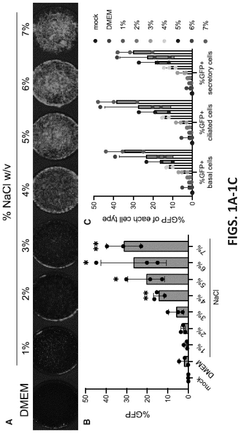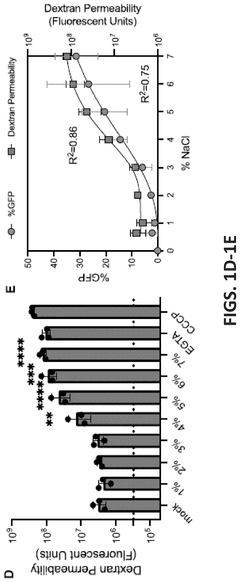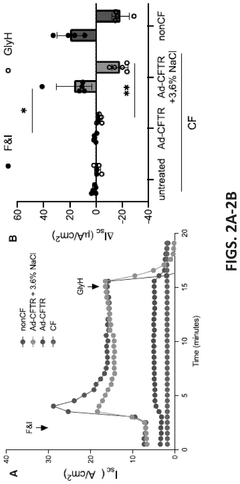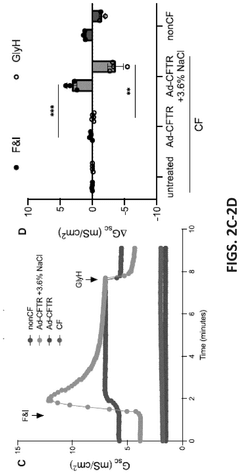Future Trends in Hypertonic Solution Development
Hypertonic Solution Evolution and Objectives
Hypertonic solutions have played a crucial role in medical treatments and scientific research for decades. The evolution of these solutions has been marked by significant advancements in understanding osmotic pressure, cellular biology, and fluid dynamics. Initially developed for basic rehydration purposes, hypertonic solutions have since expanded their applications to various fields, including emergency medicine, surgery, and biotechnology.
The primary objective in the development of hypertonic solutions has been to create more effective and versatile formulations that can address a wide range of medical and scientific needs. This includes improving the ability to rapidly restore intravascular volume in cases of severe dehydration or hypovolemic shock, enhancing tissue preservation techniques for organ transplantation, and developing more efficient cell culture media for biotechnology applications.
Recent trends in hypertonic solution development have focused on optimizing the composition and delivery methods to maximize therapeutic benefits while minimizing potential side effects. Researchers are exploring novel combinations of electrolytes, colloids, and other bioactive compounds to create tailored solutions for specific medical conditions. For instance, the incorporation of antioxidants and anti-inflammatory agents into hypertonic solutions is being investigated to mitigate reperfusion injury in ischemic tissues.
Another significant trend is the development of "smart" hypertonic solutions that can respond dynamically to physiological changes in the body. These advanced formulations aim to maintain optimal osmotic gradients over extended periods, potentially revolutionizing the treatment of chronic conditions such as cerebral edema or intracranial hypertension.
The field is also witnessing a growing interest in nanotechnology-based hypertonic solutions. Nanoparticles are being engineered to enhance the delivery and efficacy of hypertonic solutions, potentially allowing for more targeted and controlled osmotic effects at the cellular level. This approach holds promise for applications in cancer treatment, where localized hyperosmotic environments could be created to disrupt tumor growth.
As we look to the future, the objectives for hypertonic solution development are becoming increasingly ambitious. Researchers aim to create multi-functional solutions that can simultaneously address multiple physiological imbalances, such as combining volume expansion with oxygen delivery and metabolic support. There is also a push towards developing environmentally friendly and cost-effective production methods to make advanced hypertonic solutions more accessible globally.
In conclusion, the evolution of hypertonic solutions reflects a journey from simple rehydration tools to sophisticated therapeutic agents. The current objectives in this field are centered on enhancing specificity, efficacy, and versatility, with a clear trend towards personalized and responsive formulations. As technology and our understanding of cellular physiology continue to advance, we can expect hypertonic solutions to play an even more significant role in medicine and biotechnology in the coming years.
Market Analysis for Advanced Hypertonic Solutions
The market for advanced hypertonic solutions is experiencing significant growth and transformation, driven by increasing demand across various sectors, particularly in healthcare and biotechnology. The global hypertonic solution market is projected to expand at a robust rate over the next decade, with a compound annual growth rate (CAGR) exceeding industry averages. This growth is primarily attributed to the rising prevalence of chronic diseases, an aging population, and advancements in medical treatments requiring specialized solutions.
In the healthcare sector, hypertonic solutions are gaining traction in critical care settings, where they are used for fluid resuscitation, management of intracranial pressure, and treatment of severe electrolyte imbalances. The increasing adoption of these solutions in emergency departments and intensive care units is a key factor driving market growth. Additionally, the use of hypertonic solutions in perioperative care and post-surgical recovery is expanding, further boosting market demand.
The biotechnology and pharmaceutical industries are also significant contributors to market growth. Hypertonic solutions play a crucial role in cell culture media, cryopreservation, and drug formulation processes. As research and development activities in these sectors intensify, the demand for advanced hypertonic solutions is expected to surge. The trend towards personalized medicine and regenerative therapies is likely to create new opportunities for specialized hypertonic formulations.
Geographically, North America and Europe currently dominate the market, owing to their advanced healthcare infrastructure and high healthcare expenditure. However, the Asia-Pacific region is emerging as a lucrative market, driven by improving healthcare access, increasing disposable incomes, and growing awareness about advanced medical treatments. Countries like China and India are expected to witness substantial growth in demand for hypertonic solutions.
The market is characterized by the presence of both established players and innovative start-ups. Key market players are focusing on product innovation, strategic collaborations, and mergers and acquisitions to strengthen their market position. There is a growing trend towards the development of multi-functional hypertonic solutions that offer additional therapeutic benefits beyond their primary osmotic effects.
Challenges in the market include stringent regulatory requirements, particularly for solutions used in medical applications, and the need for extensive clinical trials to demonstrate efficacy and safety. However, these challenges also present opportunities for companies that can successfully navigate the regulatory landscape and bring innovative products to market.
In conclusion, the market for advanced hypertonic solutions shows promising growth potential, driven by technological advancements, expanding applications, and increasing healthcare needs globally. As research continues to uncover new applications and improve existing formulations, the market is poised for sustained growth and innovation in the coming years.
Current Challenges in Hypertonic Solution Development
Despite significant advancements in hypertonic solution development, several challenges persist in this field. One of the primary obstacles is achieving optimal osmolarity without compromising safety and efficacy. Researchers struggle to balance the concentration of solutes to create solutions that effectively draw fluid from tissues without causing cellular damage or systemic imbalances.
Another critical challenge lies in the formulation stability of hypertonic solutions. Many high-concentration solutions tend to crystallize or precipitate during storage, reducing their shelf life and reliability in clinical settings. This instability often necessitates complex packaging and storage requirements, increasing costs and limiting widespread adoption.
The biocompatibility of hypertonic solutions remains a concern, particularly for long-term or repeated use. Some solutions may cause irritation, inflammation, or adverse reactions in certain patient populations. Developing hypertonic formulations that are well-tolerated across diverse patient groups while maintaining therapeutic efficacy is an ongoing challenge for researchers and pharmaceutical companies.
Delivery methods for hypertonic solutions present another hurdle. Traditional administration routes may not always provide optimal distribution or absorption of the solution. Researchers are exploring novel delivery systems, such as controlled-release mechanisms or targeted delivery approaches, to enhance the effectiveness of hypertonic therapies while minimizing potential side effects.
The scalability of production processes for hypertonic solutions is also a significant challenge. As demand for these solutions grows, manufacturers face difficulties in maintaining consistent quality and purity during large-scale production. Ensuring uniformity in osmolarity and solute concentration across batches requires sophisticated quality control measures and advanced manufacturing technologies.
Regulatory compliance and standardization pose additional challenges in hypertonic solution development. The lack of universally accepted standards for osmolarity measurement and solution classification complicates the approval process and hinders international collaboration. Harmonizing regulatory requirements across different regions while addressing specific local health needs remains a complex task for the industry.
Lastly, the cost-effectiveness of hypertonic solutions is a persistent challenge. Developing and producing high-quality, stable hypertonic formulations often involves significant investment in research, specialized equipment, and rigorous quality control processes. Balancing these costs with the need for affordable healthcare solutions, particularly in resource-limited settings, continues to be a major consideration for developers and healthcare providers alike.
State-of-the-Art Hypertonic Solution Formulations
01 Hypertonic solutions for medical treatments
Hypertonic solutions are used in various medical treatments, including wound healing, reducing edema, and managing intracranial pressure. These solutions have a higher solute concentration than body fluids, which can draw fluid out of tissues and cells through osmosis. This property makes them effective in treating conditions where fluid reduction is necessary.- Medical applications of hypertonic solutions: Hypertonic solutions are used in various medical applications, including treatment of edema, intracranial pressure reduction, and as a component in wound healing therapies. These solutions can help draw excess fluid from tissues and promote osmotic balance in the body.
- Formulation of hypertonic solutions for specific treatments: Hypertonic solutions are formulated with specific concentrations and compositions for targeted treatments. These may include saline solutions, sugar-based solutions, or combinations of electrolytes designed to address particular medical conditions or physiological imbalances.
- Use of hypertonic solutions in cell preservation and cryopreservation: Hypertonic solutions play a crucial role in cell preservation techniques and cryopreservation protocols. These solutions help protect cells from damage during freezing and thawing processes by controlling osmotic stress and preventing ice crystal formation.
- Hypertonic solutions in ophthalmic applications: Hypertonic solutions are utilized in various ophthalmic treatments, including management of corneal edema and as a component in eye drops. These solutions can help reduce intraocular pressure and improve ocular surface hydration in certain conditions.
- Development of novel hypertonic solution delivery systems: Research is ongoing to develop innovative delivery systems for hypertonic solutions, including controlled-release formulations and targeted delivery mechanisms. These advancements aim to improve the efficacy and safety of hypertonic solution treatments in various medical applications.
02 Hypertonic solutions in cell preservation and cryopreservation
Hypertonic solutions play a crucial role in cell preservation and cryopreservation techniques. These solutions help protect cells from damage during freezing and thawing processes by controlling ice crystal formation and cellular dehydration. They are particularly useful in preserving biological samples, organs, and tissues for research and medical purposes.Expand Specific Solutions03 Hypertonic solutions for nasal and respiratory treatments
Hypertonic saline solutions are used in nasal and respiratory treatments to alleviate symptoms of various conditions. These solutions can help reduce inflammation, improve mucociliary clearance, and provide relief from congestion. They are commonly used in treating sinusitis, allergic rhinitis, and cystic fibrosis-related respiratory issues.Expand Specific Solutions04 Hypertonic solutions in agriculture and plant science
Hypertonic solutions have applications in agriculture and plant science, particularly in studying plant cell responses to osmotic stress. These solutions can be used to induce plasmolysis in plant cells, which is useful for research on cell wall properties, osmotic regulation, and drought tolerance in plants. Additionally, hypertonic solutions may be used in seed priming techniques to improve germination and seedling vigor.Expand Specific Solutions05 Hypertonic solutions in food preservation and processing
Hypertonic solutions are utilized in food preservation and processing techniques. The high solute concentration in these solutions can inhibit microbial growth and extend the shelf life of food products. This principle is applied in methods such as osmotic dehydration, where water is removed from foods using hypertonic sugar or salt solutions, improving their stability and preserving quality.Expand Specific Solutions
Key Industry Players and Competitive Landscape
The development of hypertonic solutions is in a mature phase, with a growing market driven by increasing applications in healthcare and industrial sectors. The global market size is projected to expand significantly in the coming years, fueled by advancements in medical treatments and biotechnology. Technologically, the field is evolving rapidly, with companies like Medtronic, Novartis, and Allergan leading innovation. These firms are focusing on improving solution efficacy, reducing side effects, and expanding applications. Emerging players such as Fresenius Medical Care and Alcon AG are also contributing to technological advancements, particularly in specialized medical applications. The competitive landscape is characterized by a mix of established pharmaceutical giants and innovative biotech firms, driving continuous improvement and diversification of hypertonic solution technologies.
Novartis AG
Allergan, Inc.
Breakthrough Technologies in Osmotic Agents
- A method involving a bolus of hypertonic NaCl solution is introduced to rapidly change the dialysis fluid inlet concentration, allowing the calculation of dialysance through integration of concentration differences and fluid flow rates, eliminating the need for constant inlet concentration settings and reducing measurement time.
- The use of a hypertonic solution, specifically a hypertonic salt solution with a salt concentration ranging from about 1% to 8%, is introduced to enhance the delivery of gene therapy vectors by contacting cells with it before, after, or simultaneously with the vectors, thereby improving gene transfer efficiency.
Regulatory Framework for Hypertonic Solutions
The regulatory framework for hypertonic solutions is a critical aspect of their development and commercialization. As these solutions continue to evolve, regulatory bodies worldwide are adapting their guidelines to ensure safety, efficacy, and quality standards are met. The U.S. Food and Drug Administration (FDA) plays a pivotal role in shaping the regulatory landscape for hypertonic solutions, particularly in the context of medical applications.
FDA regulations for hypertonic solutions are primarily governed under the Federal Food, Drug, and Cosmetic Act. These regulations encompass various aspects, including manufacturing practices, labeling requirements, and clinical trial protocols. Good Manufacturing Practices (GMP) are strictly enforced to ensure consistent quality and safety of hypertonic solutions. Manufacturers must adhere to rigorous quality control measures and maintain detailed documentation throughout the production process.
Labeling requirements for hypertonic solutions are particularly stringent, given their potential impact on patient health. Labels must clearly indicate the solution's composition, concentration, intended use, and any potential side effects or contraindications. The FDA also mandates that labels include specific warnings for certain patient populations, such as those with renal impairment or cardiovascular conditions.
In recent years, there has been a growing emphasis on harmonizing regulatory standards across different regions. The International Conference on Harmonisation of Technical Requirements for Registration of Pharmaceuticals for Human Use (ICH) has been instrumental in this effort. ICH guidelines are increasingly being adopted by regulatory agencies worldwide, including the FDA, European Medicines Agency (EMA), and Japan's Pharmaceuticals and Medical Devices Agency (PMDA).
Looking ahead, the regulatory framework for hypertonic solutions is likely to evolve in response to emerging technologies and novel applications. For instance, as personalized medicine gains traction, regulators may need to develop new guidelines for patient-specific hypertonic formulations. Additionally, the increasing use of nanotechnology in drug delivery systems may necessitate updated regulations to address potential safety concerns.
Regulatory bodies are also focusing on streamlining the approval process for hypertonic solutions, particularly those addressing unmet medical needs. Fast-track designation and breakthrough therapy status are becoming more common for innovative hypertonic solutions that demonstrate significant potential in treating serious conditions. This trend is expected to continue, potentially accelerating the development and market entry of novel hypertonic therapies.
Environmental Impact of Hypertonic Solution Production
The environmental impact of hypertonic solution production is a critical consideration as the industry evolves. The manufacturing process of hypertonic solutions often involves energy-intensive operations and the use of various chemicals, which can contribute to greenhouse gas emissions and potential pollution if not properly managed.
One of the primary environmental concerns is water usage. The production of hypertonic solutions requires significant amounts of purified water, which can strain local water resources, especially in water-scarce regions. As future trends in hypertonic solution development unfold, there is a growing emphasis on implementing water recycling and conservation techniques to minimize the environmental footprint.
Chemical waste management is another crucial aspect. The production process generates various byproducts and waste streams that need careful handling and disposal. Advanced treatment technologies and closed-loop systems are being developed to reduce the volume of waste and recover valuable components, aligning with circular economy principles.
Energy consumption in the production of hypertonic solutions is substantial, particularly in the purification and sterilization stages. Future trends point towards the adoption of more energy-efficient equipment and processes, as well as the integration of renewable energy sources to power manufacturing facilities. This shift not only reduces the carbon footprint but also aligns with global sustainability goals.
Packaging materials used for hypertonic solutions also contribute to environmental concerns. The industry is exploring biodegradable and recyclable packaging options to minimize plastic waste. Additionally, there is a focus on optimizing packaging designs to reduce material usage while maintaining product integrity and shelf life.
As regulations tighten and consumer awareness grows, manufacturers are increasingly adopting life cycle assessment (LCA) approaches to evaluate and mitigate the environmental impact of hypertonic solution production. This holistic view encompasses raw material sourcing, manufacturing processes, distribution, and end-of-life considerations.
Looking ahead, the development of green chemistry principles in hypertonic solution formulation is gaining traction. This approach aims to design products and processes that reduce or eliminate the use and generation of hazardous substances, further minimizing environmental impact. Biotechnology and sustainable sourcing of raw materials are also emerging as key areas of focus in the quest for more environmentally friendly hypertonic solutions.




